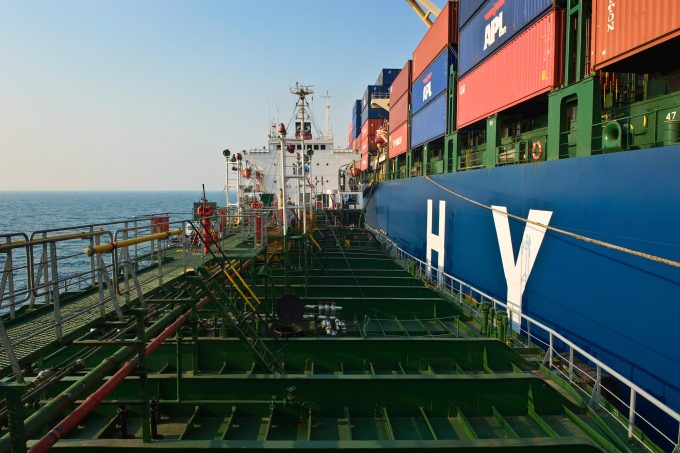US mega-airlines grow cargo volumes, but miss out on ecommerce boom
The three US mega-airlines – Delta, United and American – expanded their cargo traffic in ...
TFII: SOLID AS USUALMAERSK: WEAKENINGF: FALLING OFF A CLIFFAAPL: 'BOTTLENECK IN MAINLAND CHINA'AAPL: CHINA TRENDSDHL: GROWTH CAPEXR: ANOTHER SOLID DELIVERYMFT: HERE COMES THE FALLDSV: LOOK AT SCHENKER PERFORMANCEUPS: A WAVE OF DOWNGRADES DSV: BARGAIN BINKNX: EARNINGS OUTODFL: RISING AND FALLING AND THEN RISING
TFII: SOLID AS USUALMAERSK: WEAKENINGF: FALLING OFF A CLIFFAAPL: 'BOTTLENECK IN MAINLAND CHINA'AAPL: CHINA TRENDSDHL: GROWTH CAPEXR: ANOTHER SOLID DELIVERYMFT: HERE COMES THE FALLDSV: LOOK AT SCHENKER PERFORMANCEUPS: A WAVE OF DOWNGRADES DSV: BARGAIN BINKNX: EARNINGS OUTODFL: RISING AND FALLING AND THEN RISING

South Korean ocean carrier HMM recorded a net loss of $148m in the third quarter, to take its trading deficit to $519m for the nine-month period.
“In spite of HMM’s efforts in cutting costs and improvement in its revenue and handling volume, the net loss continued in Q3 due to an increase in bunker costs and a delay in regional rate recovery,” said the carrier.
This loss, in the traditionally most lucrative quarter, follows a negative result of $1.1bn last year, and the carrier still appears to have no immediate solutions to reduce the loss-making across its liner services.
Andv CEO CK Yoo has made several bullish statements on his ambitions to regain a top container line ranking for a South Korean carrier by doubling HMM capacity over the next four years.
HMM carried 12.8% more containers in Q3 than in the same period of 2017, 1.18m teu, producing revenue of $1.27bn, representing an improvement of 10%. But in addition to lower freight rates, the carrier was hit by the hike in bunker costs, paying 43% more for its fuel as the average cost jumped from $311 to $445 per ton.
Last month, HMM announced that the state-owned Korean Ocean Business Corporation (KOBC) had signed off on $5.4bn of new funding for the carrier, provoking a storm of protest from European and Japanese shipping associations accusing the South Korean government of “unfair competitive distortions”.
“We share the concern,” said Hapag-Lloyd’s CEO Rolf Habben Jansen during last week’s Q3 earnings call.
“We think it is very important that we have a level playing field and we are not in favour of government subsidies in the form that it is being done [with HMM], and I think that there are one or two other examples as well.
“I think that it is up to the regulators to follow up on this, but of course it is not a good situation when you have a company that is not generating any cash or any money and is posting significantly negative results and then is being incentivised to spend a lot of money on new ships, in a situation where nobody else could do that,” he added.
Underwritten by the KOBC funds, HMM has placed an estimated $2.6bn order with South Korean shipyards for 12 23,000 teu and eight 14,000 teu vessels for delivery in 2020.
Interestingly, the vessels will have exhaust gas cleaning scrubbers that will allow the ships to consume cheaper heavy fuel oil after the IMO 2020 0.5% sulphur cap comes into force.
“HMM will put its upmost efforts into stably securing additional cargoes to fill up the newly ordered mega containerships,” said the carrier, although it will be unable to successfully operate the vessels without the benefit of a vessel-sharing agreement within an alliance.
The arrival of the ULCVs will coincide with the expiry of HMM’s three-year slot charter deal with the 2M alliance on the Asia-North Europe tradelane, which The Loadstar understands will not be renewed. As a consequence it will need to make a fresh application to join either the Ocean or THE alliance.
Comment on this article